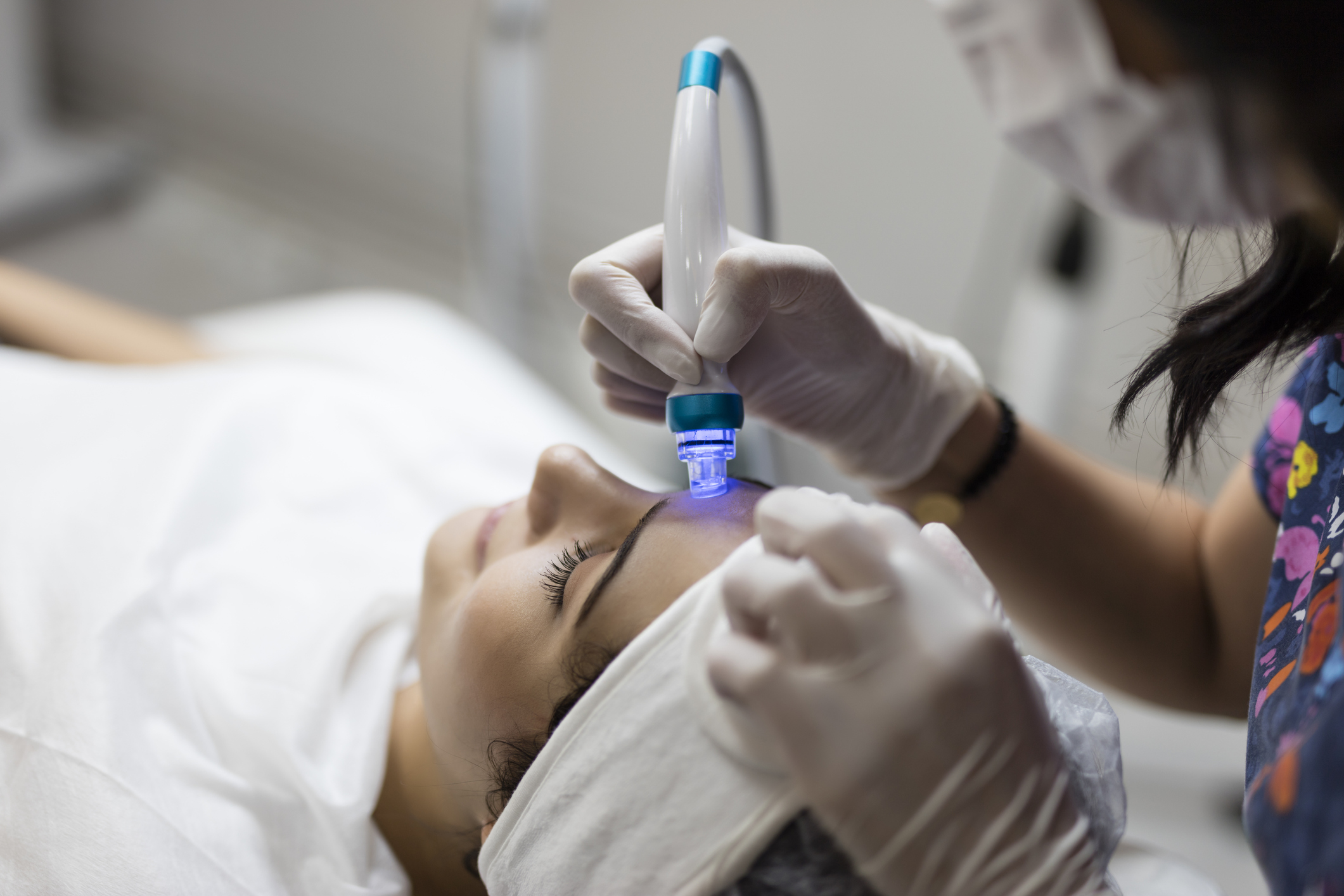Acute lymphoblastic leukemia (ALL) is the most common cancer in children. It is a blood cancer that affects the infection fighting cells of the body known as white blood cells. Approximately 1,600 new cases are diagnosed annually in the United States. Through the tireless endeavors of cooperative study groups, the current cure rate of Acute Lymphoblastic Leukemia (ALL) is 80%. In this article, I will discuss the causes, symptoms, treatment, disease recurrence, long-term complications, and future directives of childhood ALL.
Causes of Acute Lymphoblastic Leukemia
In most children the cause of ALL has remained elusive despite intense research efforts. Current clinical wisdom points towards a viral cause. In fact, some oncologists (cancer specialists) believe that viral exposure while the child is still in the mother's uterus sets the stage for leukemia formation. This philosophy is reinforced by the finding of identical leukemia markers at diagnosis and from newborn screening blood samples. Further work is needed in this important area of investigation.
Children with certain genetic (or chromosome) disorders (Down Syndrome, ataxia-telangiectasia, etc.) and/or immune system problems (x-linked severe combined immune deficiency, Wiskott-Aldrich syndrome, etc.) are at an increased risk of developing ALL. In some of these rare disorders the underlying mechanisms resulting in cancer are being unraveled.
Symptoms
Children with ALL usually get bone marrow failure. The bone marrow produces the various cells in the blood. The symptoms that a child with ALL experiences are primarily due to the dramatic decrease in the numbers of these blood cells. Anemia (decreased activity and appetite, pale appearance), easy bruising, bleeding from the nose and gums, infections and mouth ulcers may all occur. Other signs and symptoms include fever, back pain, bone pain, the inability to walk, enlarged neck glands, enlarged testicles, headaches and rarely, metabolic (sodium and potassium) imbalances.
Diagnosis
These clinical findings prompt the pediatrician to perform a blood test called a complete blood count. If his or her suspicion is confirmed (by low blood counts), the next step is to refer the child to a pediatric cancer specialist.
As a pediatric oncologist, when I see such a child, I prepare the child and family for the next step - a bone marrow aspirate. This involves placing a special needle through the skin (after it is "numbed up" with local anesthesia) and into a bone to draw out a sample of marrow. The specimen is examined under a microscope and the results are ready within an hour. If the diagnosis of leukemia is made, I meet with the family to discuss the diagnosis and the therapeutic options available. Many parents believe that if they had taken their child to the pediatrician sooner the leukemia could have been stopped. This not true. It is important for parents to know that the leukemia is not their fault (or their pediatrician's) and there is nothing they could have done to prevent it from occurring.
Treatment
With contemporary chemotherapy, 80% of children with ALL can be cured. Boys generally receive therapy for three years (because of the tendency for cancer relapse in the testicles) and girls for two years. The goal of therapy is to achieve remission (destroying the leukemia and allowing normal blood cells to regain control of the bone marrow) and maintain that remission. Almost all children achieve a remission - however, for a significant minority of children the leukemia relapses (or comes back) and becomes more difficult to treat.
Chemotherapy (or cancer medications) can be given by mouth, into a vein, into the muscle, and into the fluid that covers the brain and spinal cord. Chemotherapy medications have given us the best treatment results. The side effects of chemotherapy include hair loss, nausea, and bone marrow suppression. Although most children will experience these side effects, the degree to which each individual child is affected is different and unpredictable.
Health
Radiation therapy is reserved for children with disease in the brain and/or spinal cord (a.k.a. the central nervous system) and for boys with testicular leukemia.
Prognostic Features
A panel of pediatric oncologists convened to determine clinical prognostic features that could guide therapy and predict the chance of cure. It was determined that for a child between the ages of 1 and 9, with a white blood cell count in a non-critical range, an excellent outcome could be predicted. Moreover, specific genetic features (e.g. chromosomal translocations and DNA content) of the cancer were also determined to be of prognostic significance. Using these features we can provide risk-directed therapy. Therefore, we can reduce or eliminate the exposure of potentially dangerous drugs to children predicted to have an excellent outcome, and reserve newer therapies for children with a poorer predicted outcome. Some features of specific cancer cells can lend themselves to novel therapies and can provide a way to monitor for early recurrence of the leukemia. Active research is underway to explore these areas.
Disease Recurrence
Leukemia recurrence usually occurs while the child is receiving chemotherapy or within one year of stopping therapy. It is rare for leukemia to come back after the child has been in remission for more than four years. Clearly, a recurrence is devastating news to the child and family. A leukemia relapse usually portends a poor prognosis. Bone marrow transplantation may be the only curative therapy available. However, relapses outside the bone marrow, namely those occurring in the central nervous system and testes, may be cured with chemotherapy and radiation. We need better mechanisms to detect minimal quantities of leukemia so that a relapse can be detected earlier and appropriate treatment can be given.
Long-term Complications of Leukemia Treatment
Not too long ago the philosophy of pediatric oncologists was to cure at all costs. Today, with a cure rate of 80%, we now worry about long-term complications of treatment and must attempt a cure with minimal cost. In this section I will discuss some long-term complications of leukemia treatment.
Heart Damage
Some effective chemotherapy drugs can cause heart damage, especially in young girls who receive high doses. This may result in "heart failure". If your child is to receive these medications, special heart tests will be performed before, during and/or after treatment. These tests enable us to detect any pre-existing heart conditions and to monitor for early heart damage.
Infertility
The ovaries and testes of prepubescent girls and boys are resistant to the sterilizing effects of chemotherapy. However, once these organs become active during puberty, they are at risk for chemotherapy-induced damage that may result in permanent infertility. In these cases, I recommend that sperm banking and egg collection be performed before chemotherapy begins, and I refer families to the appropriate programs. I also tell parents that chemotherapy and the diagnosis of cancer will not lead to birth defects in their grandchildren.
Intelligence
We all want our children to perform well scholastically. For the few children with central nervous system leukemia, radiation remains the mainstay of therapy. This therapy, though effective, may decrease the IQ and cause learning difficulties. Interestingly, a study in infants with leukemia showed that very high doses of systemic chemotherapy eliminates the need for radiation. Hopefully, these findings can make radiation a therapy of the past.
Second Cancers
The risk of developing a second cancer is increased by many chemotherapy medications and usually implies a poor prognosis. The second cancer may be a new leukemia or a totally different type of cancer. Investigators at St. Jude Children's Research Hospital and I described the outcomes of children with a unique type of secondary leukemia. Almost all of these children died from the secondary leukemia. Currently, bone marrow transplantation offers the best change of cure. Because of examples like this, we constantly re-evaluate the therapy we give children and try to limit the exposure of cancer-causing medications.
Future Directives
Our research goals are to better understand the causes and mechanisms of leukemia, to improve survival with minimal or no long-term complications, and to better identify children at risk for relapse. Researchers are now identifying and describing leukemia-specific markers (cell components that can distinguish leukemia cells) in the hope that this will result in better therapies and improved survival. Moreover, these unique leukemia-specific markers can be used to assess response to anti-leukemia therapy, and possibly predict an impending relapse. Researchers are currently working on how we can improve our ability to predict a leukemia relapse, and hopefully translate that into an improved cure rate.



